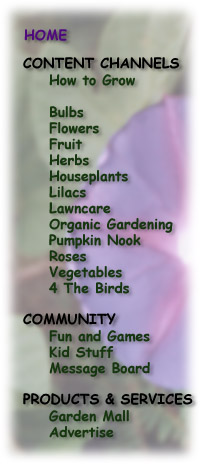Gardener's Network Garden Blog
2020
Welcome to the newest gardening section of
The Gardener's
Network... our Garden Blog! We're talking gardening of all kinds. Our
garden blog strives to offer you the latest garden information and tips on
a timely, seasonal basis.
Christmas Gifts for Gardeners

Is your holiday shopping list still
a long one? Are you running out of ideas? It's easy to
shop for the gardeners on your list. We've got ideas that will help you to
finish your shopping with ease. While gardening items are all but
impossible to find in stores this time of year, online stores have got
you covered for just about anything you need.
Here are some great gift ideas for all of the gardeners on your list:
Seeds, Seeds, Seeds - 2021 seed stock is readily
available online. You can pick up just a couple packets for the
stocking, or bundle a group of packets together as a gift. Gardener's
like the challenge of growing something new, so make sure to select at
least one packet of seeds your loved one hasn't grown before.
Garden Seeds
& Supplies
Seed Trays and Kits - Just a couple of months from now,
you and your gardening friends will be happily planting indoor seed
starts, and await with eager anticipation for the seedlings to emerge
form the soil in the seed trays. Seed trays and kits are a welcome gift,
allowing the recipient to be ready as soon as indoor planting season
arrives.
Seed Trays and Kits
Soil Testers - Experienced gardeners know their
plants grow best in rich, healthy garden soil. They test their garden
soil each year and adjust the soil, as needed. Chemical soil testers are
quick, easy to use, and inexpensive. Electronic soil testers can
be used over and over again. No gardener should be without this quick
and easy to use garden tool.
Soil Testers
Composters - Looking for a big gift idea? Beyond a
doubt, every avid gardener wants a garden composter to produce organic
compost, to improve and enrich their garden's soil.
Composters
Live Plants - It's hard for most gardeners to
hang up the shovel and rake each fall. Live plants that can be grown
indoor as houseplants, allow us to continue our beloved garden hobby all
winter long.
Live Plants
We wish you and your family a very happy, and especially healthy holiday
season!
Author: Bob Matthews
Posted: December 13, 2020
Pumpkin and Halloween Recipes
Are you finalizing plans for your Halloween party or the big event?
Halloween isn't complete without the snack tray. And, no one's got more
pumpkin and Halloween recipes than Pumpkin Nook.
No tricks here, only treats. With over 140 pumpkin recipes and dozens of
Halloween recipes to choose from, you can make this Halloween a sheer
culinary treat.
Pumpkin Recipes
Halloween Recipes
Ps. Keep this link. You'll use pumpkin recipes all through the month of
November, and especially for the Thanksgiving dessert tray.
Author: Bob Matthews
Posted: October 20, 2020
A Pumpkin's Time to Shine
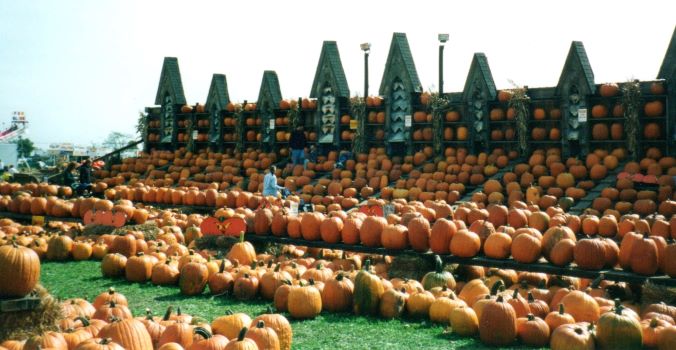
Right now is a pumpkin's time to shine, and they
are indeed shining oh so brightly. Pumpkins of all shapes, sizes and
colors are decorating and brightening front yards and the interiors of
houses and buildings. They are everywhere! And, that makes us very
happy.
Now, I'm going to let you know where the pumpkins
shine their brightest. The absolutely largest pumpkin website on the
internet has virtually anything and everything about pumpkins. It's not
selling stuff. It's totally a content site with more information and fun
than you can "shake a pumpkin at".
With the growing season over, people are checking
out the many Halloween pages for decorating tips, party ideas, party
games, carving tips, dozens of Halloween recipes and just plain fun.
Looking for the world's largest pumpkin by weight? It's over a ton and
you can see it at Pumpkin Nook.
Do you want to see the world's largest pumpkin pie? You know where to
look. Teachers are using the kid safe content for lesson plans and art
projects, too.
Don't waste another minute. Join in the fun.
Visit Pumpkin Nook today!
Author: Bob Matthews
Posted: October 15, 2020
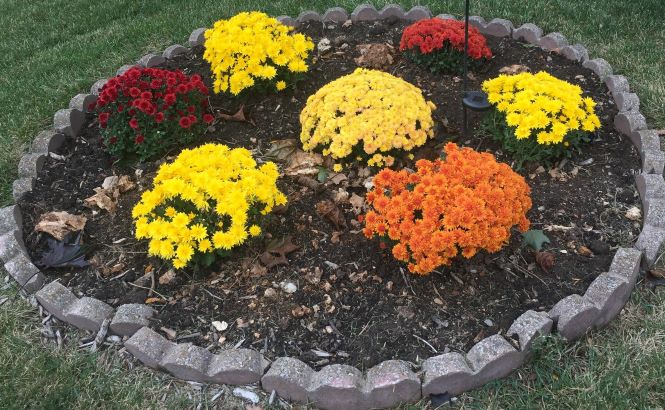
The Season's Last Blooms
Every flower has it's day, a time, a season when it blooms in its full,
colorful glory. As the flower blooming season nears an end in most parts
of the country, one of the most colorful of all flowers bursts onto the
scene. Chrysanthemums provide a blast of color to yards and
flower gardens. And, oh what a great show they put on. Long lasting mums first
open up in the last days of summer to early fall. Their blooms last for
many weeks in the cooler fall weather. The plentiful store
bought chrysanthemum plants are grown and forced into bloom right as the other flowers in
your flower garden die off. Mums are very hardy, surviving frosts and light
freezes, bringing a wide range of colors in your soon to be white lawn.
Place some mums in your front yard directly into a flower garden, or in
flower pots on the front porch. You will be rewarded with compliments on
how beautiful they are.
There's no shortage of colors to dazzle both yourself and the many
passersby in your neighborhood. The most popular mums come in various
shades of white, yellow, orange and reds. Display them singly in flowerpots,
or fill a small flower garden with a range of colors. They look beautiful
anywhere and anyway you show them off.
To save or not to save, that is the question. After the booms
have died, the first snowflakes of the season will quickly follow. You
may have even seen a few flakes while the flowers are still blooming. As
perennials, you can grow them next year. If they are planted in a place
where they can be permanently at home, you're all set. If you want to
move them, they can be moved after the blooms have died, or wait until
spring to transplant them into their permanent home. A caution: store
bought varieties are not as winter hardy as other varieties, and they
need protection from cold winter winds.
More on Hardy
Chrysanthemums
.Ps as we head through October, take a visit to the largest pumpkin
website on the planet. Visit
Pumpkin Nook now!
Author: Bob Matthews
Posted: October 3, 2020
Harvesting More than Flowers, Vegetables, Herbs and Fruit
The harvest in you backyard garden is in full swing. Flowers are in full
bloom. We're cutting them for our indoor arrangements, and to give to
family and friends. They're fresh and beautiful, brightening up any room
where you display them. As for our vegetable gardens, we can't eat the
harvest fast enough. If you're like me, you're canning, freezing, and
giving vegetables away to family and friends as fast as you can. Neighbors run, when they
see you heading up the driveway with an armful of zucchini. If you're a
herb gardener, and we hope you are, every morning or two you can be
found picking herbs at their freshest and strongest, to dry or freeze.
And, there's no scurvy among your friends, who receive ample amounts of fresh
fruits.
Yes, this is a great time to be a gardener, as you're harvesting all
sorts of goodies. But wait!! Haven't you forgotten something!? There's one
more thing you should be gathering up with the rest of the harvest. If
you're not harvesting and drying seeds for next year's crop, you're
certainly missing out on some of the fun. You are also missing the
opportunity to save a
few bucks on the cost of next year's seeds. Sure, a single packet of
seeds is just a couple bucks. But, chances are, you buy a couple dozen
seed packet each year, and that adds up.
In addition to saving money, there's another big reason to save seeds.
If you liked the particular variety of plant and how it produced in your
garden, you can save the seeds and produce the exact same plant next
year. If the seeds you used to produce the desired plant came from a
fellow grower, you don't want to keep asking them for new seeds each
year. Saving seeds works great, as long as you aren't saving seeds from
a hybrid plant, and there has been no
cross pollination going on in your
garden.
If you have never saved seeds before, you don't know how easy it is to
collect most types of seeds. When you carve a pumpkin, there's hundreds of seeds, just
waiting to be dried and stored away until next spring. Let the pods of a few peas
and beans dry on the plants. There' no shortage of pepper seeds,
when cutting up a ripe pepper in your kitchen. Dried marigolds seeds will come out of
the spent flower pods, with a just light pull. Many other flower seeds
can be harvested in a similar manner. The key to harvesting seeds, is to
know when to collect them. Like everything else in the gardening world,
it take a little learning and experience, that's all.
When your seeds are all properly dried and packed away, you will be all
the more anxious for next spring to arrive. Sometime mid-winter, when
your garden is covered in couple feet of snow, you will have fun
performing a seed germination test, to assure they will sprout later in
the spring. We will talk abut that during the winter months.
So, every time you harvest just about anything from your garden, take a
few minutes to also harvest a few seeds for next year. If it is a
particularly special plant, save a few seeds for your garden buddies.
You'll be glad you did.
Related Topics:
How to save
seeds
Drying Herbs
Author: Bob Matthews
Posted August 18, 2020
The Right Way to Water Your Plants

The Fourth of July is in the rear view window. July's promise of dry,
blazingly hot weather is already upon us. The forecast for most of the
country this weeks is for highs in the 90's, with little or no rain.
Your not the only thing wilting under the sun's rays. Your plants are,
too.
Every plant in your yard and garden could use a drink right now.
Your grass is turning brown. That's your lawn's way of screaming for a
good dose of water. Your flower and vegetable plants may be wilting
before your very eyes. Without sufficient water, the plants lose vigor
and flower production slows. Production in your vegetable garden slows
too, as the size and quality is reduced. Keeping your plants well
hydrated may not be all that they need right now. But until the hot and
dry weather breaks, it's most likely the most important thing you can do
for them.
People write to us every day of the year. The questions tend to be very
oriented to where we are in the gardening season. Right now, the most
common questions are: "How often do I water my plants?" and "When do I
water my plants?" A third, very important question that is seldom asked
is: "How do I water my plants?".
How often you water your plants, depends upon the soil, type of
plant, and weather conditions. The obvious answer for most plants, is to
water your plants when the soil is dry..... down to 2" to 3" for
established plants, and down to an inch or less, for new seedlings with
shallow roots. In addition, if the plants are wilting, turning dry, or
growth is slowing, it's time to give them a drink. You don't need to
(and probably shouldn't), water every day. In the hottest, driest part
of summer, we recommend no more than every 2-3 days. It is healthy to
encourage the roots to go deeply in search of moisture.
When you water plants is another important issue. The number one
"no no" is watering near or after dark. Water on the plant's leaves in
the evening, is an open invitation to plant disease. You'd be amazed at
how many people don't know this, or ignore it. About a decade ago, a
commercial pumpkin farmer friend of mine complained how powdery mildew
on his plants was getting worse and worse. I asked him about his
watering practices. He replied "I water at night with overhead
sprinklers. There is much less
loss from evaporation at night". The water was causing powdery mildew to
explode on his farm. The next year he switched to early morning
irrigation, and the problem with powdery mildew was solved. I might add
that while many homeowners water their lawns in the evening, lawn
grasses are not immune to mildew problems from this practice. It is
uncommon, but it does happen.
Now for the seldom asked question: "How do I water my Plants?". The
answer to this question is simple..... water them at ground level
whenever possible. As previously stated, water on the leaves in the
evening invites plant disease. Although less common, water on the leaves
during the daytime in warm, humid weather can also encourage plant
disease, especially on bushy plants. The leaves don't absorb water, the
roots do. So, why waste water on the leaves? It is also interesting to
know, that watering before, during, or after a rain, is sometimes a good
idea. Often summer rains are too light to water down into the soil to a
depth where it is accessible to all of the roots. So, next time it rains
during a drought, consider watering soon after the storm has passed.
More on....
How to Water
Your Garden Plants
Watering Your Lawn
the Right Way
Author: Bob Matthews
Posted July 8, 2020
Fastest to Harvest Little Vegetable
You wait for months for sweet corn and tomatoes to grow and ripen. Take
a look at the the "days to harvest" aon the seed packets you bought, and
you will discover the vast majority of them take at least 60 days before
they are ready to eat. There's one speedy little guy, that you can grow
from seed, that will be ready for your salad in as little as 30 days.
You guessed it, zippy little radishes can be ready to eat faster than
any other vegetable in your garden.
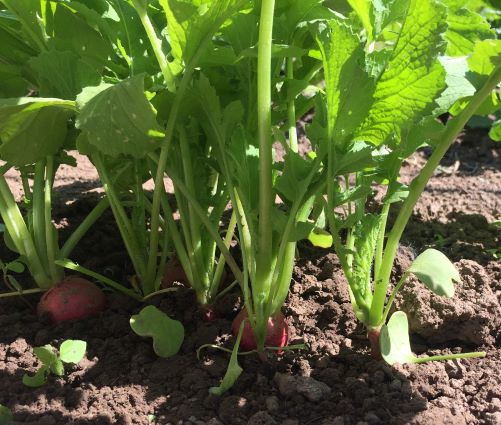
There are so many reasons to grow radishes. Most importantly they taste
good, adding a little "zip" to garden salads, macaroni salad, as a
garnish, and for vegetable trays. Even if you don't like them yourself,
radish rosettes offer a touch of class to any food display.
Radishes are easy to grow. In rich or average
garden soil, you can grow them without adding additional fertilizer.
Keep them well watered, to help speed their growth. Properly space
plants 1 1/2 to 2 inches apart, and keep them well weeded. Radishes do
not like crowding, and won't grow bulbs, if planted too close. In about
30 days, they will be ready to pick and enjoy! Space constrained? Radish
plants only take up a small amount of space. Try growing them in
containers and window boxes.
Radishes are a great candidate for succession planting. Plant small rows
at about two week intervals. They do not grow well in hot, dry weather.
As hot summer weather arrives, stop growing them. Resume succession
planting as the weather as fall approaches and the weather begins to
cool.
Radishes were first cultivated in India, China and Central Asia
thousands of years ago. Over many centuries, their popularity spread to
gardens and kitchens all over the world. Americans consume over 400
million pounds of these zesty little roots each year. While Americans
mostly eat the raw, in other parts of the world they are cooked or baked
in recipes.
Don't let anything keep you from heading out to your vegetable garden,
and planting a row of radishes today!
More on Growing Radishes:
How to
Grow Radishes
Growing
Radishes by Garden Hobbies
Author: Bob Matthews
Posted June 12, 2020
World Plant a Vegetable Garden Day
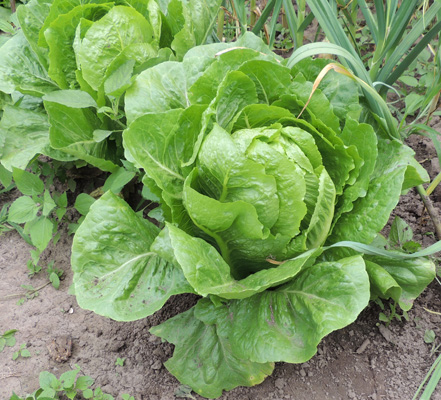
Author: Bob Matthews
Posted May 19, 2020
You know the old saying: " Give a man some vegetables and you feed him
for a day. Teach a man how to grow a vegetable garden, and you feed him
for life!"
Okay, maybe that's not quite word for word the old saying. But,
World Plant a Vegetable Garden Day is May 19th. It could not have
come at a better time. Millions of people have lost their jobs and
struggle to feed their families. The country's food supply is under
stress. There's shortages at the grocery store. Foodlink and other
relief agencies are running out of food. Food prices are rising. There
is no better time than now, to start or enlarge a vegetable garden.
A vegetable garden can supplement your food supply, and be a major
source of produce all summer long. Canning and freezing a portion of
your crop, can help to feed your family long after the gardening season
is over. Reducing your dependency on the grocery store or farm market,
takes away a little of the worry about how to feed yourself and your
family. In addition, gardening is a therapeutic stress reliever. The
food you grow will be healthier than store bought, and a whole lot
fresher. While you may hear people say "I don't garden to save money",
you do indeed save money.
Almost anyone can grow some type of vegetable or herb, even if you live
in a apartment. All it takes is a sunny window. Perhaps you can't grow
corn or cucumbers. But, a window box or an indoor planter is a great
place to test your green thumb, growing loose leaf lettuce, radishes,
chives and other smaller sized vegetable plants. If you have a patio or
deck, you can use larger planters and grow peppers and even shorter
varieties of tomatoes.
Now, if I can only figure out how to grow hamburger and eggs.........
Have a Happy World Plant a Vegetable Garden Day!
For more on how to grow your favorite veggies at
The Gardener's Network.
Buy Seeds Safely Online
Now More than Ever
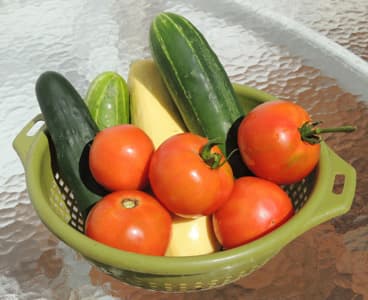
Author: Bob Matthews
Posted April 17, 2020
Do you feel like you just have to grow a garden this year, maybe for the
first time? You are in excellent company. Millions of us right now, feel
exactly like you do. The urge to grow a vegetable garden has never felt
stronger for new and experienced gardeners alike. The exponential
increase in the number of new gardeners, is the normal result of any
crisis. Now more than ever, you should grow a vegetable garden.
As the effects of the pandemic reach deeper and deeper into just about
every nook and cranny of our lives, millions of people are turning to
growing vegetables as one positive step they can make. There are many
good and logical reasons to grow vegetables, and herbs, too. Experienced
gardeners, are making plans to enlarge their vegetable gardens. They are
also studying and Learning ways to
make their garden more productive, and how to extend the harvest.
Flower gardeners are thinking about how to grow a few vegetable plants
among the flowers. Some may even be exploring the list of
edible
flowers, as they make selections for their flower beds.
There are several reasons people are turning to vegetable gardens, to
ease the crisis in their own lives:
It makes you feel better. After all, doing something is
better than doing nothing. And, gardening is something you can do. In
rural towns and villages, you have the space for a sizable garden. In
the city, a porch or roof top garden (if allowed) in pots and
containers, may be the perfect solution. With a sunny, south facing
window, you can grow a variety of container plants. Gro-lights also
offer an opportunity to grow vegetables.
Supply chain uncertainty is a new term in America's
vocabulary. Just a month ago, who would have thought these three words
would ever pass our lips!? Your vegetable garden can feed you and your
family from today, and up to the first frost and beyond. We're now
hearing about meat packing facilities shutting down. Milk is being
dumped and vegetables are either rotting on the vine or in a warehouse,
as some processing facilities are temporarily closed. You can be certain
there is enough food in America, but the supply chain is upended. Until
it straightens out, growing your own vegetables, assures you will have
ample supply.
High demand for food is the result of panic buying.
Stocking food stuffs at home, has literally emptied store shelves.
Coupled with supply chain problems, shelves are slow to refill.
Vegetables have a limited shelf life. You can extend the storage life,
by canning or freezing most fruit and vegetables. For new gardeners,
freezing
vegetables is the easiest approach.
Saving money has always been a top reason to grow a
garden. Now, it's even more important. During tough times, every penny
saved is vitally important. The money you save on groceries, will help
to pay the rent and other expenses. Got extra vegetables? Some of us
might be able to sell the excess. Just make sure to know the local laws
and permit requirements for selling them.
Freshness and quality is an increasingly important
issue today. If you've been to your local supermarket, you know what I
mean. Scarce supplies translates into more low quality produce making
its way onto store shelves. Gardeners know that the freshest, best
quality vegetables, are those that you pick from your garden just before
dinner.
Gardening is therapeutic. The first time you work in
your garden, you will discover just how truthful this is. Work in your
garden and let your troubles melt away. It's peaceful, and relaxing. The
warm sunshine lifts your sprits. Outdoors with your hands in the dirt,
you're mind is relieved of the troubles and worries of the day. It's so
relaxing, you will look forward to spending more and more time in your
garden.
It's a wonderful feeling to grow enough vegetables to
feed your family, neighbors, and friends!
So what are you waiting for? Let's get growing!!
More Resources:

They're Called Snow Peas for a Reason
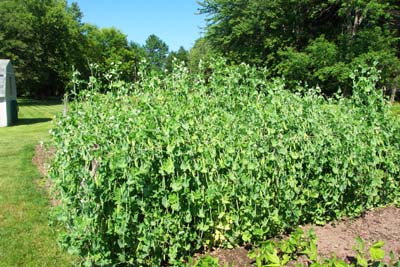
Author: Bob Matthews
Posted March
23, 2020
Are sweet and tasty garden snow peas one of the vegetables you are
planning to grow this year?
Also called sweet peas, they are one of the earliest vegetable crops of the season. Many home
gardeners plant them much later than they should be, resulting in a less
than optimum, and sometimes disappointing harvest.
They call them snow peas for a reason. Peas are a cold weather
crop. Snow peas germinate in lower soil temperatures. The plants thrive
in cooler temperatures. Young plants survive frost and freeze. The
plants will be fine, even after being covered by a surprise, late season
snowfall. Hot, humid weather brings plant disease, which can kill
your plants just as the pods appear and begin to get plump.
This means, you should be planting garden peas now in just about any
part of the country. In more northerly areas of the country, a first
week of April planting may be ideal. Warmer areas of the country, could
have snow peas up and growing by now.
Peas can and should be planted as soon as the ground can be worked in
the spring. At 60 ° F, they sprout in about 9 days. We do recommend that
you hill your sweet pea plants. Raised rows work just fine. This helps
to drain off excess water from heavy spring rains. Soggy, wet soils can
result in rotting the seeds before they sprout. It will also warm the
soil, aiding in plant germination.
Planting your sweet peas now has another advantage. The crop will
be harvested in time for you to clean up and reuse the space for a
second season or fall crop. To grow and harvest snow peas in time
to plant a second crop, it is especially important for more northerly
areas to plant snow peas early. A second crop can be just about any
plant that will produce a harvest before the first frost this fall. With
an early start, you double the size of your garden's productivity!
Read more on
Important Garden Alert

Author: Bob Matthews
Posted March 13, 2020
Like so many other things, the coronavirus will have an impact on this
year's garden season. The information you are about to read is very
important to gardeners. Equally important, the information should not
cause you to panic. It is not life and death. It should not cause you to
drop everything else. Read on, to see why it is so important for you to
get your garden seeds now. This article will also help you to identify
what seeds will be impacted and how.
Like many other things right now, the coronavirus will ultimately cause
some disruption in the availability of garden seeds, at a time when
gardeners are getting ready to acquire their seeds. Any time there is
a recession, floods, earthquakes, disease, or calamities of any type,
the demand for home garden seeds rises dramatically. The availability of
home garden seeds is no exception. The coronavirus coupled with the
stock market downturn and the resulting economic impact, will cause some
disruption to the availability of seeds.
The perfect example is the Great Recession in 2008-2009. When the great
recession arrived, it brought out doomsayers, pessimists and
survivalists in great numbers. (aka the sky is falling). People lost
their jobs. Many started gardens for the first time, to help pinch
pennies and feed the family. Existing gardeners enlarged the size of
their gardens. Even people who felt somewhat secure, turned to
gardening. The doomsayers and especially survivalists came out in
droves, buying hundreds of seed packets apiece. More than one
survivalist bought over a thousand packets!
As you absorb this information, I repeat, do not panic. Handle you
higher, most important priorities first. Buy ample toilet paper. Get
your cleaning and sanitizing supplies. Stock up on some groceries. And,
don't forget to acquire your favorite beverages, to help see you past
this crisis. Then, and only then, calmly turn your attention to garden
seeds.
Like in the Great Recession, in the next several weeks their will be
some shortages of vegetable seeds. To some extent, herb seeds will be
impacted, too. But, there WILL NOT be an outright run on vegetable
seeds. Remember, seeds have a limited shelf life. You can only use so
many seeds this year. By this time next year, supply will be back to
normal. As you might guess, there will be no significant impact on
flower seeds. Back in the Great Recession, seed manufacturers assured
retailers that there would be ample supply. That did not prove to be the
case. As the weeks progressed, there were shortages, one by one some
varieties went out of stock for the season. It was not a problem for
those who didn't care about what kind of tomatoes or beans they wanted.
Most times, gardeners simply turned to another tomato or bean variety or
brand. There were a few types of vegetable seeds that did indeed become
quite scarce. Most notably was Kale, which at the time was just becoming
the latest health food rage. By late April, Kale seeds were not
available anywhere. As we progressed through the planting season,
more and more types of seeds ran out of stock for the season, far more
than normal and far earlier. Late in the spring planting season, many
gardeners could not get the seeds they wanted. For gardeners who
normally plant a second crop in the summer, second season seeds were
simply not available for most varieties.
By now, you should realize what a gardener should do. First, don't
panic. Second, don't over buy, as next year's seed supply will be just
fine. Finally, don't wait. Calmly buy now, to assure you get the seeds
you want. But, it doesn't make sense to buy more than you normally do.
Related Imformation:
Garden Seeds and Supplies
Seed Companies
Please share this important article with your gardening friends.
The Best Garden Begins with a Plan
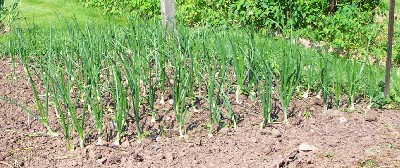
Author: Bob Matthews
Posted March 5, 2020
March is a good time to make plans for your flower, vegetable and herb
gardens. A successful garden begins with a good plan. Sure, you can have
a good garden without one. But, the very best gardens, are those that
used and followed a plan of what to do. Importantly, a plan should
include a timetable, to help remind you when things need to be done. For
example, snow peas, a cool weather crop, are best planted as soon as the
garden can be worked in the spring. Planting them too late, and hot
weather arrives before the harvest, negatively affecting the crop.
Indoor plant start times vary. Tomato plants started indoors too early,
can result in overgrown, root bound seedlings. Mark target dates in your
plan. Your plan also leads to efficiency in all of your gardening
activities.
Your plan should include these key, early steps:
-
Determine what you are going to plant this year. Will it
be same-o, same-o? Or, will you be adventuresome, and try something new,
something challenging?
-
Buy the seeds you need. Don't wait until later, when
stores begin to run out of variety. March is peak time for seed sales.
Find seeds now.
-
Perform a soil test, to make certain the pH level is ideal
for the plants you have decided to grow.
See Soil pH.
-
Determine what will you add to the soil, to improve it.
Will it be compost, manure, fertilizers, or some of each?
How to improve
garden soil.
-
Right now, it's a great time to
review the basic "how to's" of growing your favorite plants. along with searching out
new tips on how to grow a bigger and better garden. Make sure to surf through
our many How To Grow pages.
-
Identify when to start or transplant tender, cold and
frost sensitive plants. Know your local last frost date. Then, consult
the back of the seed packet, to determine when to start your indoor
transplants.
The above key dates are just a few of the items for the early days of
your garden plan. Focus upon the early steps for the new gardening
season. You can always add or amend the plan as the season goes by.
Whatever you do, keep it simple. Don't let the task of planning become a
chore.
The result of your advance planning? Healthier plants. A bigger,
healthier crop. And, a garden season filled with success!
It Doesn't Have to Be Red!!

Author: Bob Matthews
Posted February 12, 2020
It's Valentine's Day, a day that is all about love. It can be a
romantic love, a love of a child or family member, or even to express
our feelings to a friend. As we all know, nothing expresses that love
more than roses, specifically red roses.
But, wait just a minute!! Stop and think about the meaning of each color
of roses. It doesn't have to be red. Each rose color has its own
specific and special meaning. It sends an unspoken message, to express
what you want to say.
You can bet the house, that she knows what each color represents. You
can bet your bottom dollar, she hopes to receive red roses. If your
intent is to express your love this Valentine's Day, nothing sends the
message of love more clearly than red roses. The only exception we can
think of, is if she doesn't like the color red. I don't know about you,
but I am certain when it comes to roses on Valentine's Day, she
absolutely loves the color red. And, it pretty much has to be roses.
Even if she is allergic to roses, chances are she still wants red roses
from you on this day. She will enjoy looking at them, even if she can't
get close enough to touch or smell them.
There are plenty of situations where red roses just might not be the
right thing to give. Perhaps, you are not ready to signal the word
"love" in your relationship. Or, maybe you are sending the gift of roses
to a friend in a non-romantic situation this Valentine's Day. If this is
your intent, you're in luck. You have a wide choice of colors.
Before you decide, first check out
The Meaning of
Each Rose Color.
For those of you who received roses on Valentines Day,
Learn Ho to Make
Roses Last Longer.
It's All About the Seeds

Author: Bob Matthews
Posted January 1, 2020
As the new year and a new decade arrives, it doesn't take a sage
prognosticator to know what's on the minds of each and every home
gardener. That's right, seeds. For the next several weeks, it's the most
important thing we think about. The experienced gardener knows a great garden always begins with
the seeds he or she acquires. If you are one of the very few of us who will have a
small garden, and you will grow the same variety of plants every year, you
can skip the rest of this article. For the other 99.9% of gardeners,
read on. The more you read and learn about the plants you will grow, and
the seeds you will use in this
year's garden, the better prepared you will be to produce a garden
overflowing with prize winning plants.
Without a doubt, there is much to think about, when pondering your seed
options and choices.
The first thing to consider, is how good your garden plants were
last year. If your bean crop was less than bountiful, or the beans were a little
stringy, then perhaps your seed selection should lean towards a
different variety. Were your
zinnia plants too tall or too short? Look
for a variety of zinnias that fits the desired height for your flower bed.
What about the color selection for your flower bed? Many varieties of
flowers offer a wide range of colors and blends, affording you endless
possibilities. Will you go with the same brand of seeds? It might be a
good time to change brands, a time to acquire higher quality seeds, as you seek better results
than in previous years.
Fortunately for you, the internet has opened up our options to dozens of brands.
If you're expanding your garden or ready to change what you grow, you've
got a lot of fun ahead of you, as you make plans and procure the seeds
you will need. Larger gardens translate into so many more options. You
can now grow early, mid and late varieties of plants. This will allow
you to harvest fresh, homegrown
corn or
lettuces
over an extended period of time. Will you grow a wider range of
vegetables? Just imagine how great your homemade soup will taste with a
little okra
in it. Your fresh garden salads will taste so much better, and look more
appealing, with some
mustard
greens or
endive included in the mix. When it comes to flowers, expanding or
altering your flower beds offers endless possibilities. Will you go with
annuals or
perennials?
May we suggest something a little different from what you've usually
grown, like
flowering kale,
coral
bells, or
nasturtium which is an edible flower.
I don't know about you, but to me one of the best things about gardening
is experimenting with plants I've never grown. The challenge and reward
is a real thrill. Are you equal to the task? Of course you are! Have you
ever grown
Pumpkin on a Stick, or
Cotton? Both plants are guaranteed to catch the eye of anyone who
sees your victory garden. Last year, I grew
Hops just for fun. I was rewarded with a very successful crop, large
enough to offer them to a friend of mine who brews beer. Wow, writing
this article makes me wonder what new plant I will try this year......
Did we give you enough to think about? ....good. Now your mission, is to
grab another cup of hot chocolate, sit by the fireside and begin to make
those garden plans. Once you've decided, don't wait too long to get the
seeds you need. Get those seeds while they are still in stock. For those
of you who have been with us for a long time, you know we shut down our
online store last year as we headed to retirement. We were one of the
largest online seed sellers. Many of you reported that our absence left
a gap in your search for seeds. Here's a link that may help you ....
Find your garden seeds
now.

About the Author
Bob Matthews is an avid life time gardener, and a recognized garden authority
on the Internet since the 1990s. Residing in Rochester, NY, Bob is the author
and owner of The Gardener's Network,
Pumpkin Nook ,
Garden Hobbies, and other websites.
Bob proudly authored every page of the over 1,000 pages of garden information
and tips on these websites.
About some of Bob's other gardening websites:
The Gardener's Network - One of
the finest, most popular sites on the internet to read, learn and have gardening
fun. The Gardener's Network is the perfect place for you and your plants,
the perfect source for how to grow just about any garden plant!
Garden Hobbies - Looking for "How
to Grow" gardening information? It's the perfect place for you and your plants.
Pumpkin Nook - By far the biggest, most
comprehensive site on the Internet for pumpkins. Information and fun abounds,
including: how to grow pumpkins, Halloween, one of the largest collections
of pumpkin recipes and much more.
|


